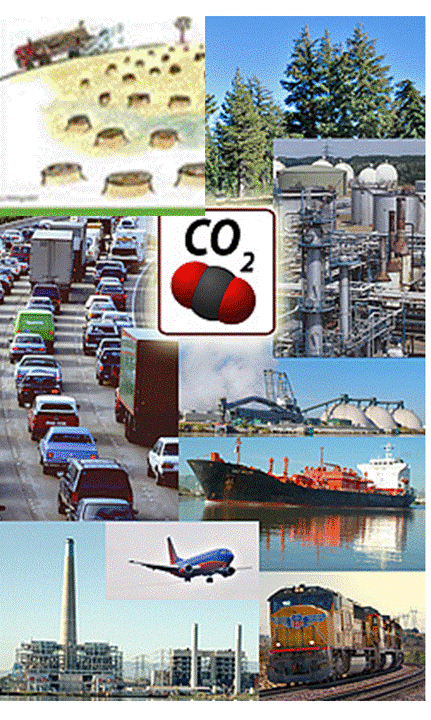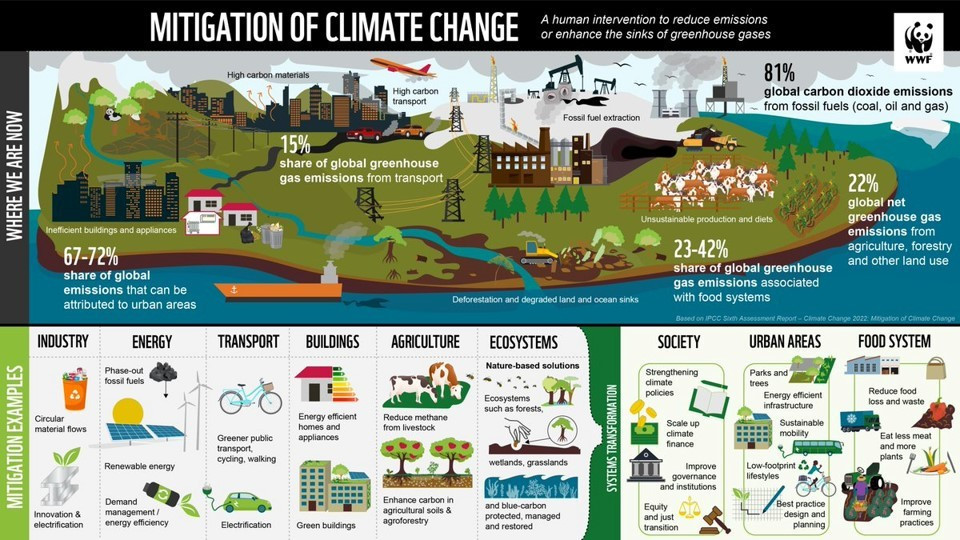
Climate Change Knowlege
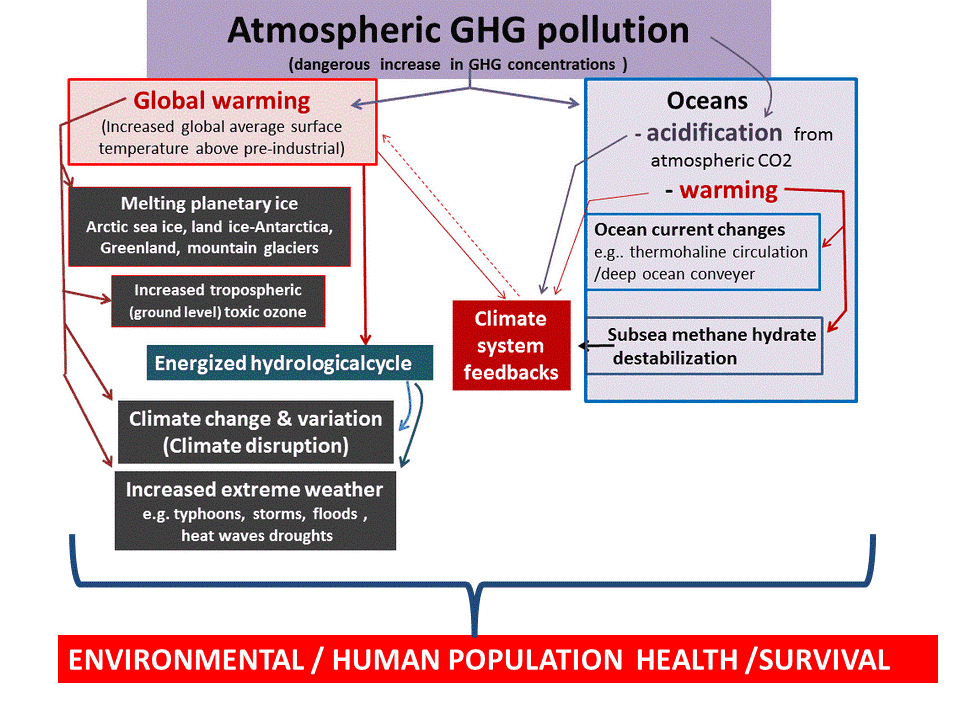
Greenhouse gas pollution
Heat radiating atmospheric trace 'greenhouse' gases are now pollutants as the US EPA 'endangerment finding' states See the report of the US EPA endangerment finding on GHGs. As with any pollutant the most important thing to know is their sources.
We also must know what is happening to the rate of GHG emissions from the sources.
All GHGs matter if we are to stop global warming continuing to increase.
Furthermore Global warming lasts for thousands of years and the global temperature is already committed to increase more than double today's increase.

GHG molecules
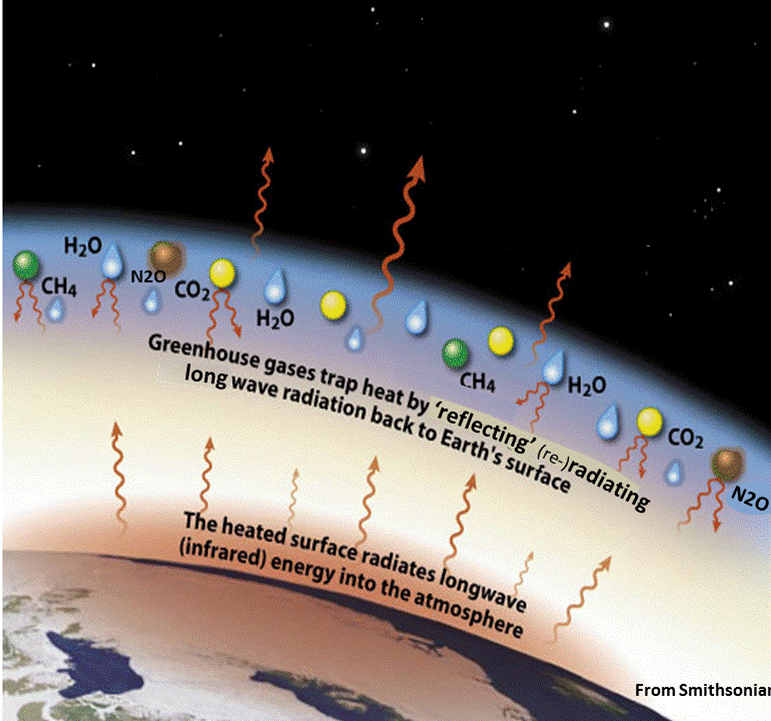
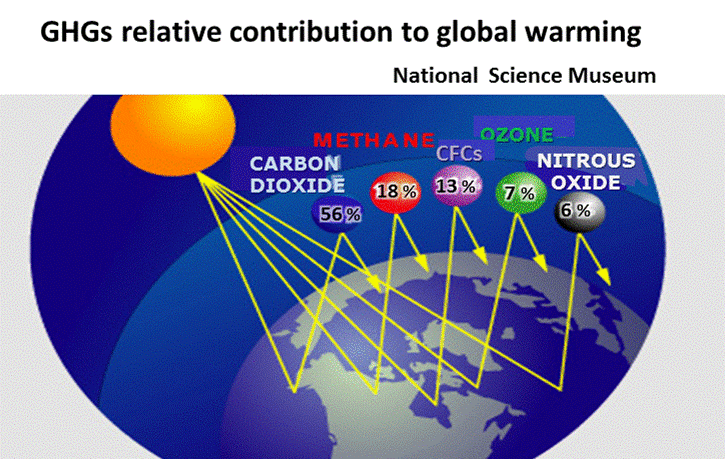
GHG sources.
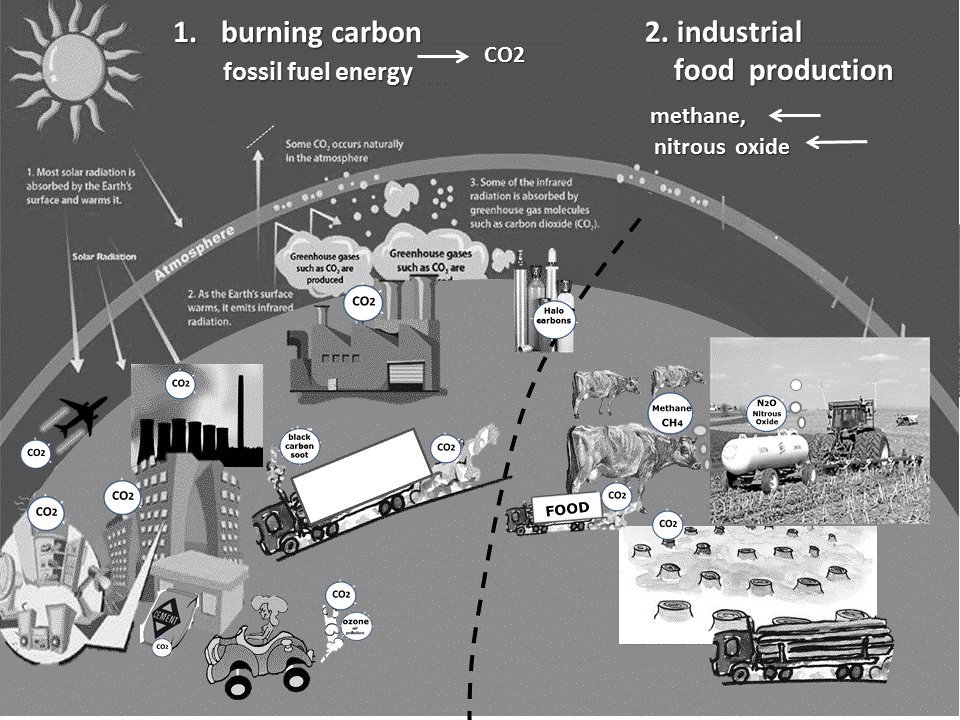
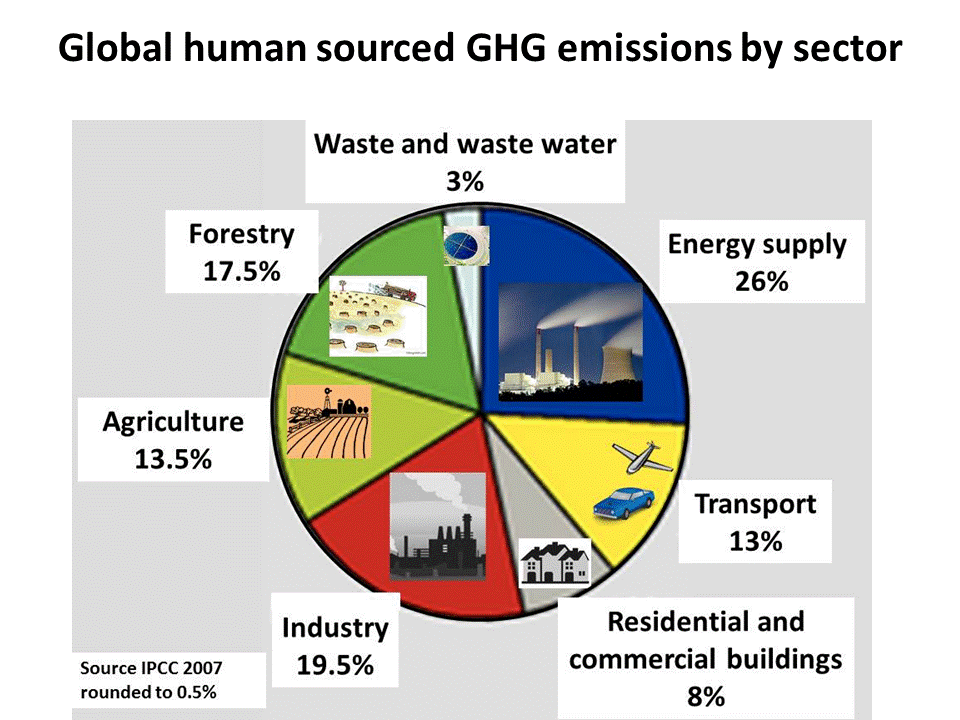
List of greenhouse gases.
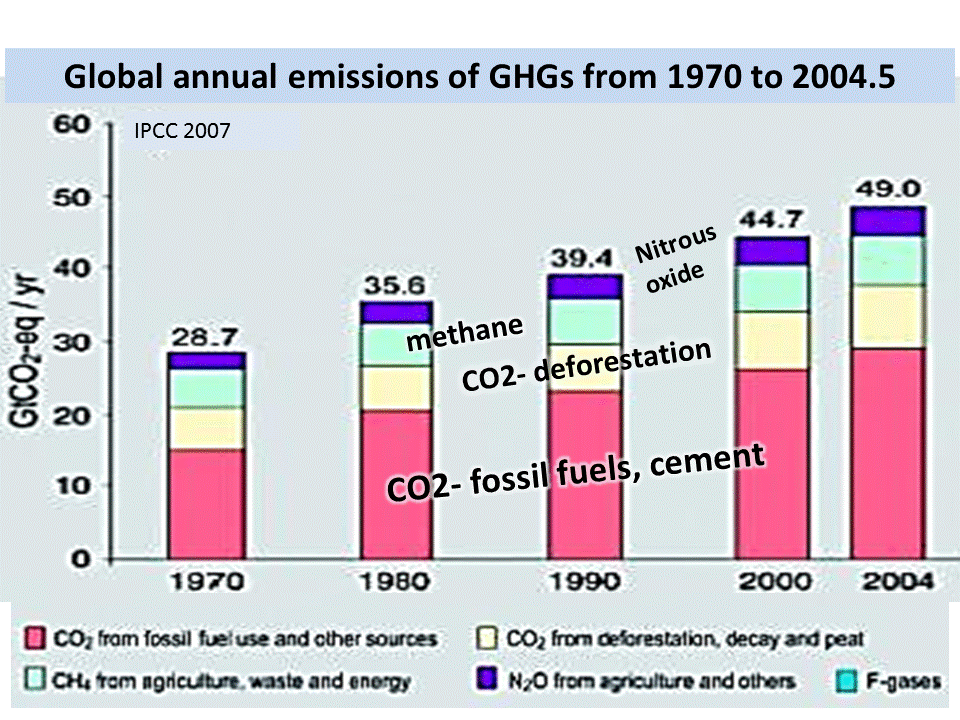
All GHG emissions matter
and must be addressed right away.
and must be addressed right away.
It does not matter that the precise numbers on GHGs varies.
What matters is that though CO2 emissions contribute to global warming the most each GHG has a substantial contribution to global warming and must be addressed to control global warming and climate change. It is a great mistake to delay addressing any non CO2 GHGs (as is the case).
Global emissions of all GHGs are increasing - another reason to address them all immediately
Industrial scale food production large GHG source.
At present are emissions are being addressed practically exclusive of the other GHGs. While that takes deforestation into account it ignores a huge source of greenhouse emissions that is practically as large as CO2. That is our modern food production. What makes food production such a large source is that livestock is the big source of methane emissions and most deforestation is clearing land for livestock and industrial scale food production.
The picture puts all emissions into just two large categories: energy production/use and food production. That makes simply two mega sectors - energy and food.
The policy for the control of global climate change is to address the individual GHGs. It makes more sense to address to address each sectoral source (human activity) of all GHGs.
Policy by GHG or by source of GHGs
In the case of CO2 it is established that the only target that really matters is zero carbon emissions (onlyzerocarbon.org). So for CO2 every source matters.
The same science applies to all long lasting GHGs which makes all sources of all GHGs matter.
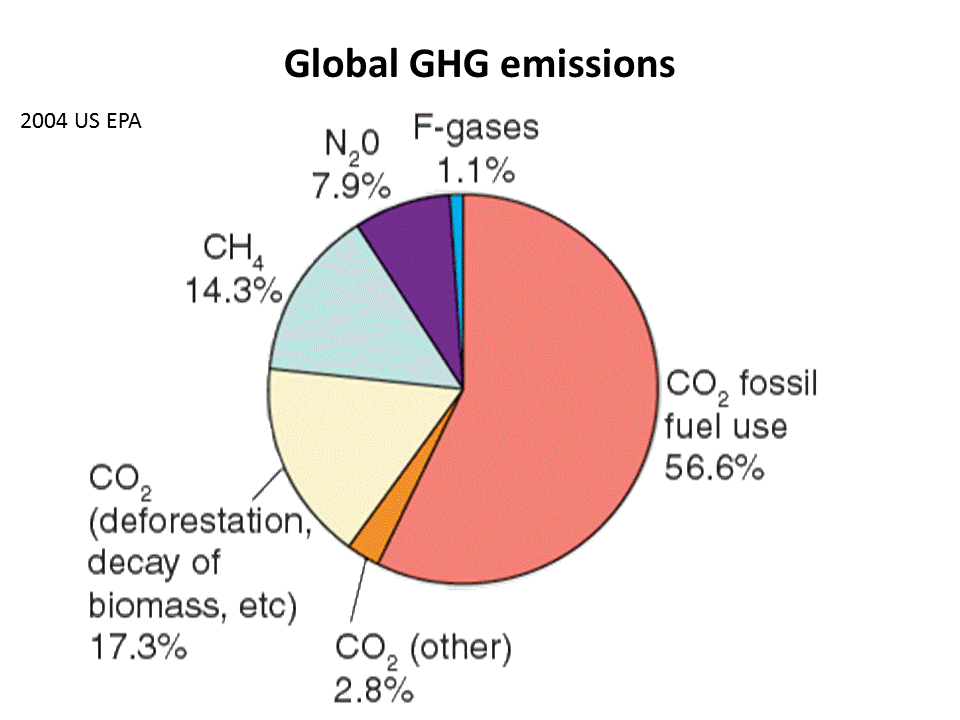
The sources of GHG emissions are reported broken down as 7 sectors.
A simpler practical approach would be to divide into just two sources-
Each sectoral source of emissions makes a substantial contribution to GHG emissions. So each sectoral source must be addressed right away. The only low figure is for waste and waste water treatment but as the GHG in this case is CO2 it must be addressed because of zero carbon.
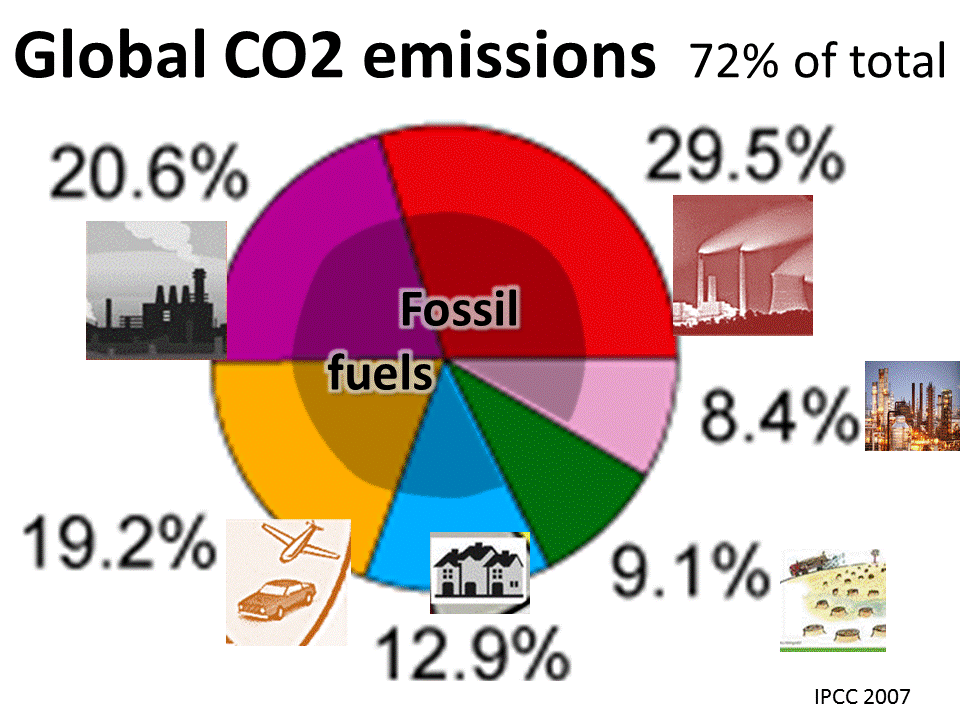
CO2:
fossil fuels mainly
also deforestation
also deforestation
Methane:
agriculture- but the sectoral source is the livestock industry from the ruminant gut.
Also fossil fuel industry.
Also fossil fuel industry.
Nitrous oxide
Agriculture industry- nitrogen fertilizers.
Also livestock manure.
Also livestock manure.
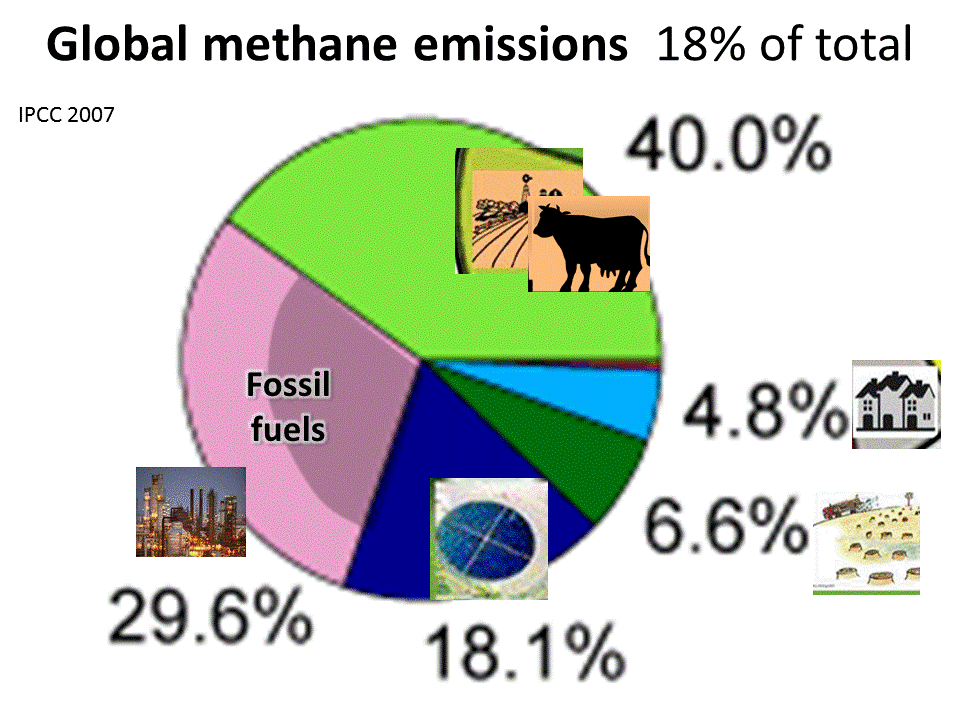
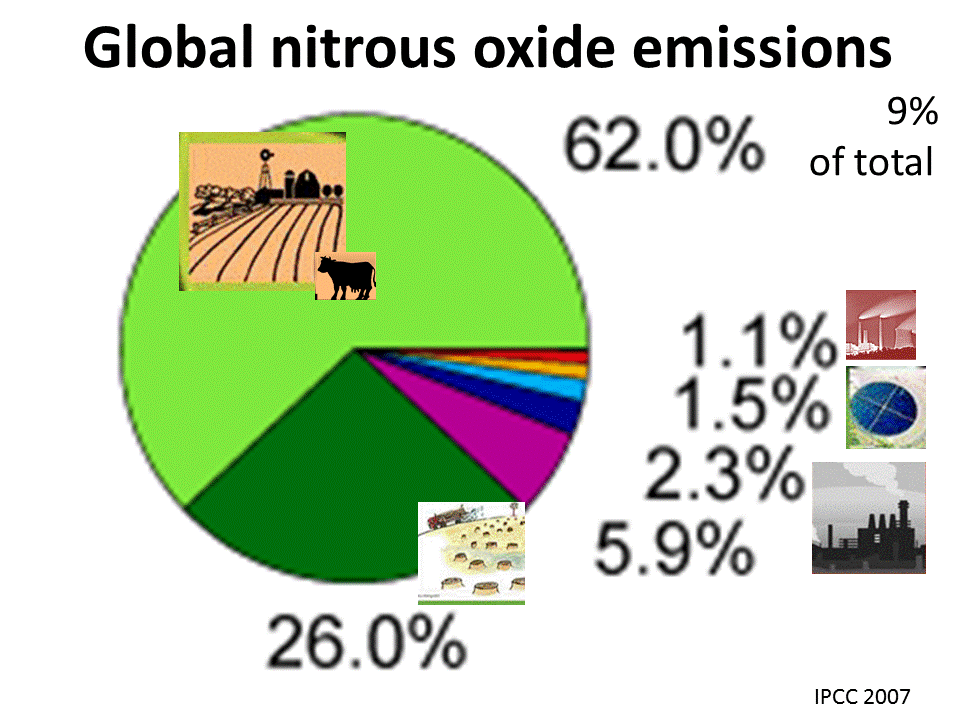

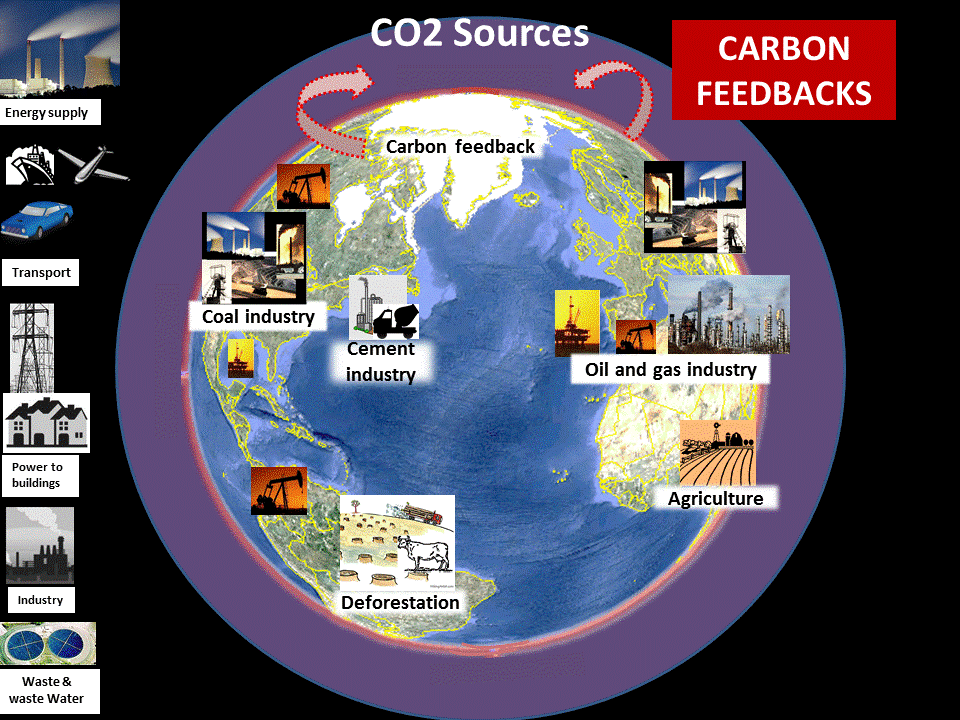
Main CO2 sources- natural and
human sourced
Human caused CO2 sources, including carbon feedbacks to global warming and elevated atmosperic CO2 .
CO2 sources .
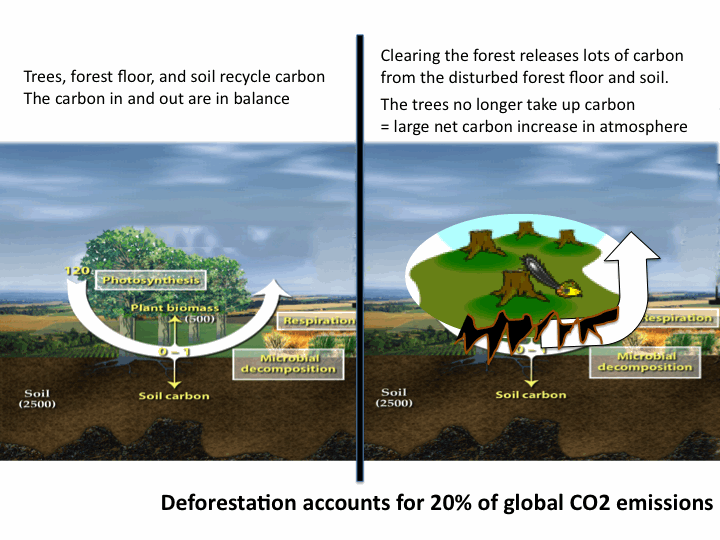
How deforestation is a source of CO2
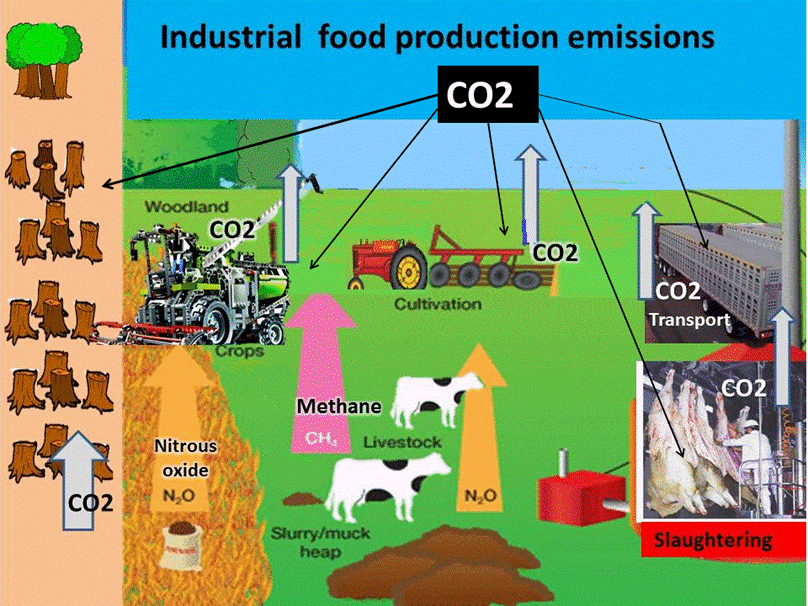
How food production is a source of CO2.
This above image shows the big food production sources of methane
and nitrous oxide.
Sources of methane
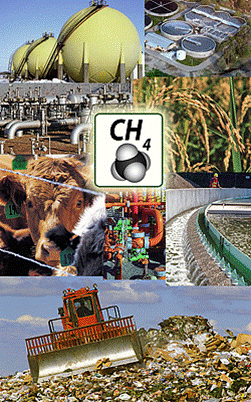
Livestock (ruminant plant digestion releases methane from the gut.
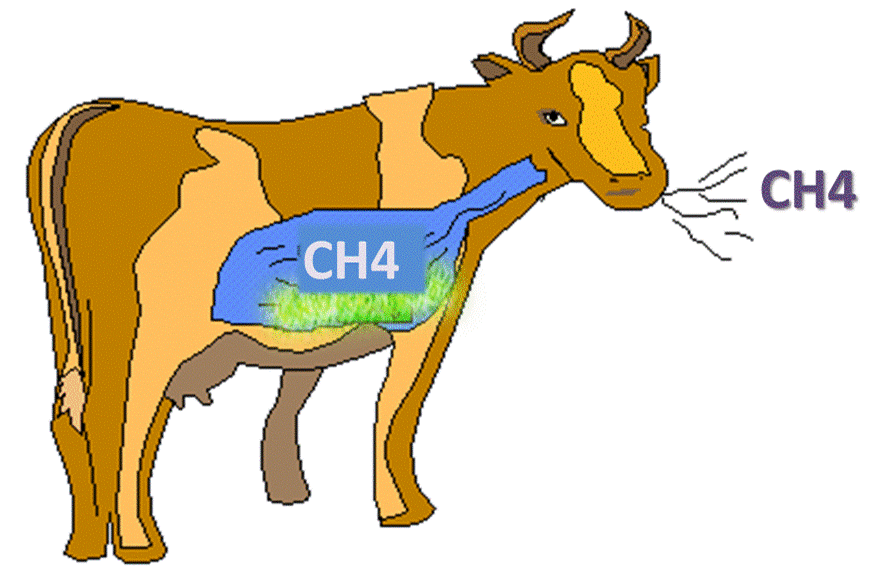
Natural gas industry: fugitive emissions(methane leaks)
Coal industry: methane leaks from coal seams
Oil industry: -methane is present in the same vicinity as oil. The industry flares (burns) methane that emits CO2.
Rice growing: wet production by 'paddy fields'
Land fills: decomposing organic matter releases methane
- Fossil fuel combustion for energy and transport
- Cement manufacture
- Metal production
- Deforestation
- Carbon feed backs: e.g. increased CO2 from warming soils
Carbon feed backs : e.g. methane emitted by thawing permafrost
Sources of nitrous oxide

Industrial agriculture: chemical nitrogen fertilizer.
Livestock industry: ammonia from manure is oxidized in the air forming
nitrous oxide.
Human sewage: similar to above
Fossil fuel combustion: especially vehicles with catalytic converters
Sewage : 'sewer gas' is methane
Permafrost feedback (warming tundra and thawed permafrost is emitting nitrous oxide.

SF6 sulfahexafluoride is the most potent long lasting GHG there is. It is an exampleofa human made chemicalsused in industries. These chemicals are the most persistent and cumulative and cumulative GHG emissions. SF6 is used in the electrical and semiconductor industries. Like all the above GHG emissions the rate of SF6 emission is increasing.
Fossil fuel combustion urban air pollution. Ground level ozone is formed from fossil fuel emission air pollution and should be classified under fossil fuel GHG emissions. It is increased by ambient heat and so with global global warming. This Increased tropospheric ozone is a feed back to global warming. Tropospheric ozone is (after CO2 and CH4) the third most important contributor to greenhouse radiative forcing. Ozone is produced in the troposphere by photochemical oxidation of CO, CH4 and non-methane VOCs (NMVOCs) in the presence of NOx (IPCC)

Sources of tropospheric (ground level) ozone GHHG




